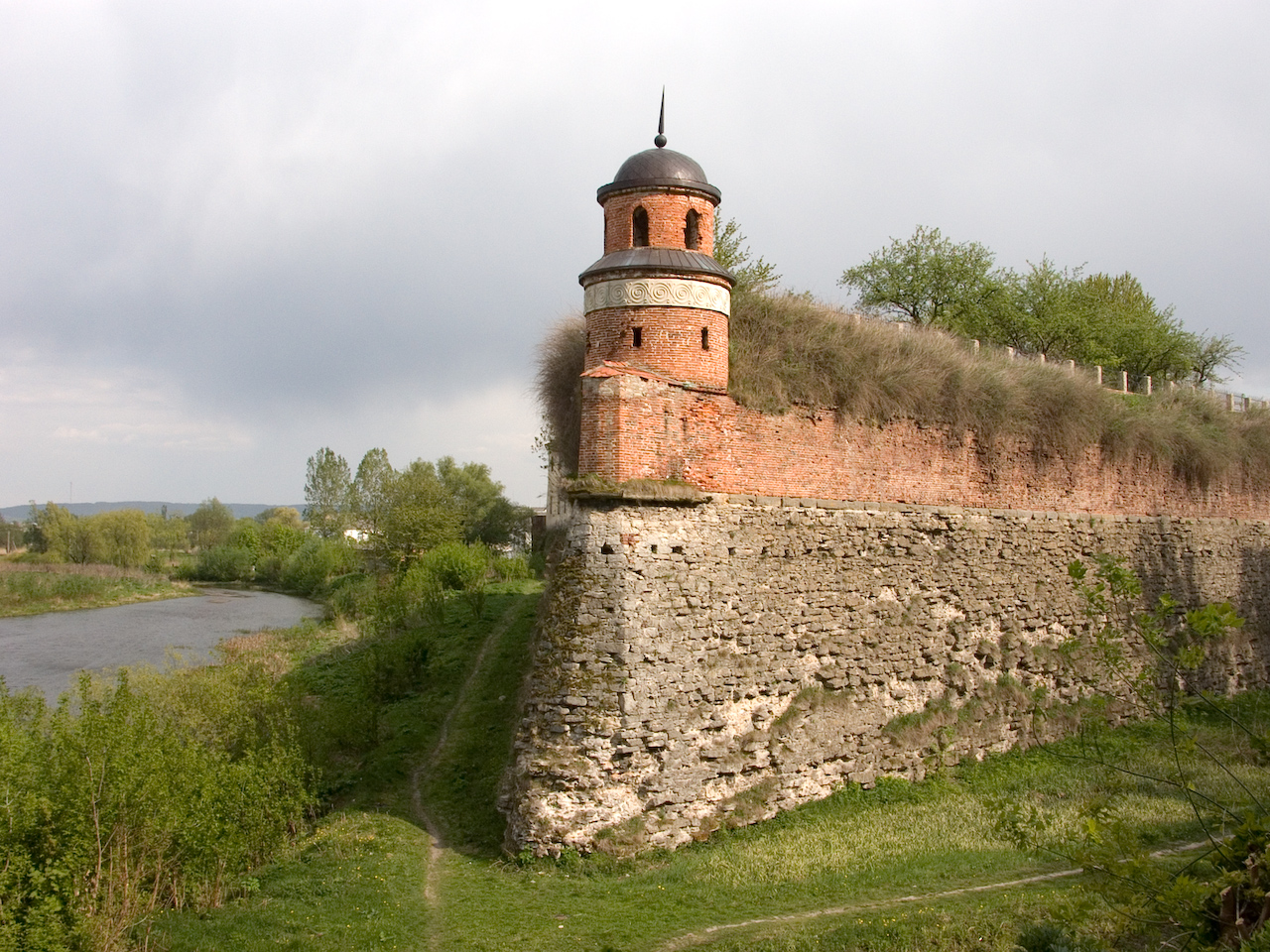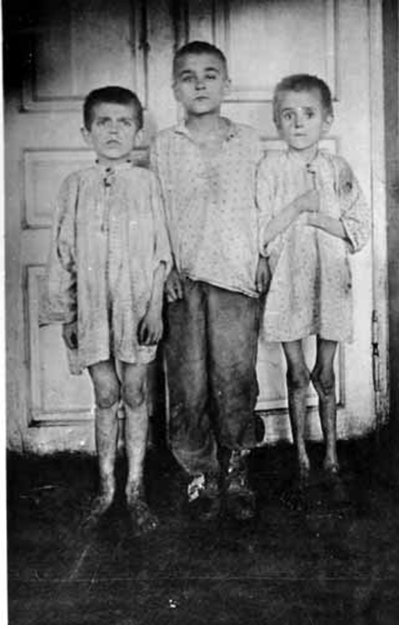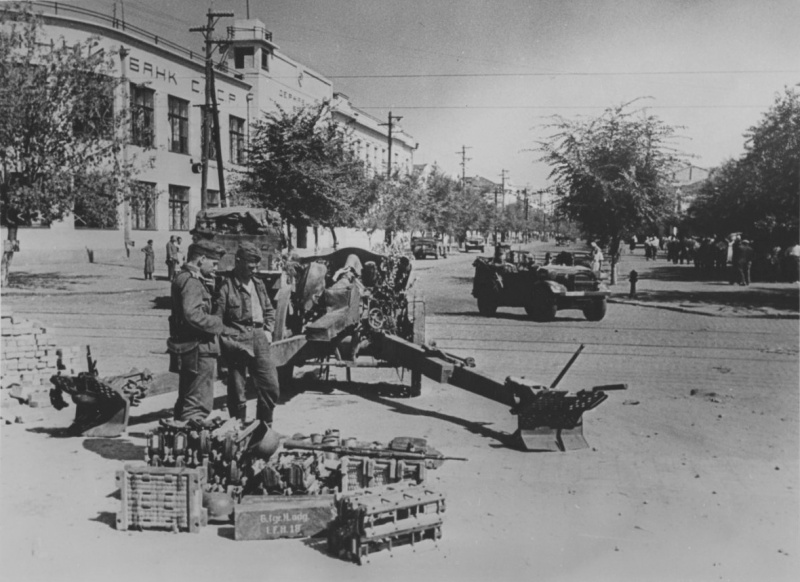|
Durchgangsstrasse IV
''Durchgangsstrasse'' IV (translated as ''Thoroughfare IV'' or ''Transit Road IV''; abbreviated DG IV) was a road constructed by Nazi Germany in Reichskommissariat Ukraine, occupied Ukraine during World War II. It was a strategic military road to supply the southern sector of the Eastern Front (World War II), Eastern Front. The large scale constructions works started in early 1942 to support the Case Blue, German advance towards Stalingrad. It ran for over from Lviv east to Stalino (now Donetsk). Organisation Todt was responsible for the construction which was sub-contracted to several private construction firms. It was constructed by forced laborers – Soviet prisoners of war, local civilians, and Jews – who were procured by the Schutzstaffel, SS and guarded by the ''Schutzmannschaft'' battalions. One of the largest Forced labour under German rule during World War II, forced labor projects undertaken by Nazi Germany that involved Jewish labor, it marked a transition between u ... [...More Info...] [...Related Items...] OR: [Wikipedia] [Google] [Baidu] |
M12 (Ukraine)
M12 or M-12 or M.12 may refer to: Automobiles * BMW M12, a turbocharged 1500 cc 10-cylinder Formula One engine of the 1980s * McLaren M12, a racing car for the Can-Am series * Mercedes-AMG F1 M12 E Performance, a 2021-spec Formula One power unit * Noble M12, a British sports car * Vector M12, an automobile made by Vector Supercars Aviation * Beriev Be-12, Soviet Naval Designation M-12, a Soviet amphibious aircraft * Grigorovich M-12, an improved version of the Grigorovich M-11, a Russian single-seat fighter flying boat designed by Dmitry Pavlovich Grigorovich * Macchi M.12, a flying boat bomber produced in small numbers in Italy in 1918 * Miles M.12 Mohawk, a 1930s British two-seat, tandem cabin monoplane Military technology & weapons * Armor, Vest, M12, developed in 1945 and used in the Korean War, was a 12-pound aluminum and nylon vest protecting against low-velocity fragments. * Beretta M12, a sub-machine gun by Italian designer Beretta * Doppelpistole M.12, a double-b ... [...More Info...] [...Related Items...] OR: [Wikipedia] [Google] [Baidu] |
District Of Galicia
The District of Galicia (, , ) was a World War II administrative unit of the General Government created by Nazi Germany on 1 August 1941 after the start of Operation Barbarossa, based loosely within the borders of the ancient Principality of Galicia and the more recent Kingdom of Galicia and Lodomeria. Initially, during the invasion of Poland by Germany and the Soviet Union, the territory temporarily fell under Soviet occupation in 1939 as part of Soviet Ukraine. Adolf Hitler formed a capital in Lemberg (Lviv) (Document No. 1997-PS of 17 July 1941), and the district existed from 1941 until 1944. It ceased to exist after the Soviet counter-offensive. History The District of Galicia comprised mainly the pre-war Lwów Voivodeship of the Second Polish Republic (today part of western Ukraine). The territory was taken over by Nazi Germany in 1941 after the attack on the USSR and incorporated into the General Government, governed by ''Gauleiter'' Hans Frank since the invasion ... [...More Info...] [...Related Items...] OR: [Wikipedia] [Google] [Baidu] |
Dubno
Dubno (, ) is a List of cities in Ukraine, city and List of hromadas of Ukraine, municipality located on the Ikva River in Rivne Oblast (oblast, province) of western Ukraine. It serves as the capital city, administrative center of Dubno Raion (raion, district). The city is located on intersection of two major European routes, E40 and E85. The city is estimated to have a population of . It is located within the historic region of Volhynia. In Soviet times it was home to the Cold War facility Dubno (air base), Dubno air base. The city is also famous for its Dubno Castle, castle. History Middle Ages First mentioned in a chronicle of 1100, when it was in possession of Yaroslav the Wise's grandson David of Brest , Dubno was even a seat of local princes for a short period of time. In 1240 the town was raided by the Mongol Empire, Mongols. In the early 14th century the region was the subject of Kingdom of Poland (1025-1385), Polish-Grand Duchy of Lithuania, Lithuanian rivalry, as ... [...More Info...] [...Related Items...] OR: [Wikipedia] [Google] [Baidu] |
Brody
Brody (, ; ; ; ) is a city in Zolochiv Raion, Lviv Oblast, Zolochiv Raion, Lviv Oblast, western Ukraine. It is located in the valley of the upper Styr, Styr River, approximately northeast of the oblast capital, Lviv. Brody hosts the administration of Brody urban hromada, one of the hromadas of Ukraine. Population: Brody is the junction of the Druzhba pipeline, Druzhba and Odesa–Brody pipeline, Odesa–Brody oil pipeline transport, pipelines. History The first mention of a settlement on the site of Brody is dated 1084 (Vladimir II Monomakh#Reign, Instructions by Vladimir Monomach). It is believed to have been destroyed by Batu Khan in 1241. Polish Kingdom From 1441 Brody was the property of different feudal families (Jan Sieniński; from 1511, Kamieniecki). Brody was granted Magdeburg rights, Magdeburg town rights by Polish King Stephen Báthory by virtue of a privilege (law), privilege issued in Lublin on 22 August 1584.Sadok Barącz, ''Wolne miasto handlowe Brody'', Lwów, ... [...More Info...] [...Related Items...] OR: [Wikipedia] [Google] [Baidu] |
Rostov-on-Don
Rostov-on-Don is a port city and the administrative centre of Rostov Oblast and the Southern Federal District of Russia. It lies in the southeastern part of the East European Plain on the Don River, from the Sea of Azov, directly north of the North Caucasus. The southwestern suburbs of the city lie above the Don river delta. Rostov-on-Don has a population of over one million people and is an important cultural, educational, economic and logistical centre of Southern Russia. History Early history From ancient times, the area around the mouth of the Don River has held cultural and commercial importance. Ancient indigenous inhabitants included the Scythian and Sarmatian tribes. It was the site of Tanais, an ancient Greek colony, Fort Tana under the Genoese, and Fort Azak in the time of the Ottoman Empire. In 1749, a custom house was established on the Temernik River, a tributary of the Don, by edict of the Empress Elizabeth, the daughter of Peter the Great, in orde ... [...More Info...] [...Related Items...] OR: [Wikipedia] [Google] [Baidu] |
Taganrog
Taganrog (, ) is a port city in Rostov Oblast, Russia, on the north shore of Taganrog Bay in the Sea of Azov, several kilometers west of the mouth of the Don (river), Don River. It is in the Black Sea region. Population: Located at the site of an ancient Greek and medieval Italian colony, modern Taganrog was founded in 1698. Contested by various factions during World War I and the Russian Civil War, the city served as the temporary Soviet Ukrainian capital in 1918. Demographics History The history of the city goes back to the late Bronze Age–early Iron Age. Later, it became the earliest Ancient Greek colonies, Greek settlement in the northwestern Black Sea region and was probably mentioned by the Greek historian Herodotus as Emporium (antiquity), emporion Kremnoi (Κρήμνοι, meaning cliffs). It had contacts as well to the other Greek colonies around the Black Sea as well as to the indigenous communities of the hinterland. In the 13th century, Republic of Pisa, Pisan ... [...More Info...] [...Related Items...] OR: [Wikipedia] [Google] [Baidu] |
Dnipro
Dnipro is Ukraine's fourth-largest city, with about one million inhabitants. It is located in the eastern part of Ukraine, southeast of the Ukrainian capital Kyiv on the Dnieper River, Dnipro River, from which it takes its name. Dnipro is the Capital (political), administrative centre of Dnipropetrovsk Oblast. It hosts the administration of Dnipro urban hromada. Dnipro has a population of Archeological evidence suggests the site of the present city was settled by Cossacks, Cossack communities from at least 1524. Yekaterinoslav ("glory of Catherine") was established by decree of the Emperor of all the Russias, Russian Empress Catherine the Great in 1787 as the administrative center of Novorossiya Governorate, Novorossiya. From the end of the 19th century, the town attracted foreign capital and an international, multi-ethnic workforce exploiting Kryvbas iron ore and Donbas coal. Renamed Dnipropetrovsk in 1926 after the Ukrainian Communist Party of the Soviet Union, Communist ... [...More Info...] [...Related Items...] OR: [Wikipedia] [Google] [Baidu] |
Kryvyi Rih
Kryvyi Rih ( ; , ), also known as Krivoy Rog ( ), is a city in central Ukraine. It hosts the administration of Kryvyi Rih Raion and its subordinate Kryvyi Rih urban hromada in Dnipropetrovsk Oblast. The city is part of the Kryvyi Rih Metropolitan Region. Its population is estimated at making it the seventh-most populous city in Ukraine and the second largest by area. Kryvyi Rih is claimed to be the longest city in Europe. Located at the confluence of the Saksahan and Inhulets rivers, Kryvyi Rih was founded as a military staging post in 1775. Urban-industrial growth followed Belgian, French and British investment in the exploitation of the area's rich iron-ore deposits, generally called Kryvbas, in the 1880s. Kryvyi Rih gained city status after the October Revolution in 1919. Stalin-era industrialisation built Kryvorizhstal in 1934, the largest integrated metallurgical works in the Soviet Union. After a brutal German occupation in World War II, Kryvyi Rih experienc ... [...More Info...] [...Related Items...] OR: [Wikipedia] [Google] [Baidu] |
Kropyvnytskyi
Kropyvnytskyi (, ) is a city in central Ukraine, situated on the Inhul, Inhul River. It serves as the administrative center of Kirovohrad Oblast. Population: Over its history, Kropyvnytskyi has changed its name several times. The settlement was known as Yelysavethrad after Empress Elizabeth of Russia from 1752 to 1924, or simply Elysavet. In 1924, as part of the Soviet Union, it became known as Zinovievsk after the revolutionary Grigory Zinoviev, who was born there. Following the assassination of Sergei Kirov in 1934, the town was renamed Kirovo. Concurrently with the formation of Kirovohrad Oblast on 10 January 1939, and to distinguish it from Kirov Oblast in central Russia, Kirovo was renamed Kirovohrad. As part of independent Ukraine, the name of the city was then changed to ''Kropyvnytskyi'' in 2016 due to Decommunization in Ukraine, decommunization laws, in honour of Marko Kropyvnytskyi, who was born near the city. [...More Info...] [...Related Items...] OR: [Wikipedia] [Google] [Baidu] |
Uman
Uman (, , ) is a city in Cherkasy Oblast, central Ukraine. It is located to the east of Vinnytsia. Located in the east of the historical region of Podolia, the city rests on the banks of the Umanka River. Uman serves as the administrative center of Uman Raion (district). It hosts the administration of Uman urban hromada, one of the hromadas of Ukraine. Population: Among Ukrainians, Uman is known for its depiction of the Haydamak rebellions in Taras Shevchenko's longest of poems, ''Haidamaky'' ("The Haidamaks", 1843). The city is also a pilgrimage site for Breslov Hasidic Jews and a major center of gardening research containing the dendrological park Sofiyivka and the University of Gardening. Uman (Humań) was a privately owned city of Poland and the Polish–Lithuanian Commonwealth. Name In addition to the , in other languages the name of the city is and (local Yiddish pronunciation 'Imen'). History Polish rule Uman was first mentioned in historical documents in ... [...More Info...] [...Related Items...] OR: [Wikipedia] [Google] [Baidu] |
Haisyn
Haisyn (, , ) or Haysyn is a city in central Ukraine. It serves as the administrative center of Haisyn Raion within Vinnytsia Oblast. It is located on the in the eastern part of the historical region of Podolia. Its population is Name It is believed by many scholars that the origin of the name "Haisyn" is Turkic in origin, as the land was previously inhabited by the Black Klobuks during the 11th and 12 centuries. Haisyn is derived from a Turkic word meaning "camp(ing) on a hill". In addition to the Ukrainian (''Haisyn''), in other languages the name of the city is and . History Polish rule Hajsyn was first mentioned in 1545. In 1566, following the Union of Lublin, it became part of the Bracław Voivodeship of the Polish-Lithuanian Commonwealth. Under the rule of Stephen Báthory, the land was given to Tromchinsky family of feudal lords. In 1600, the settlement was granted to nobleman Swirski. In 1605, it passed from nobleman Oriszewski to Jadwiga Różynska ... [...More Info...] [...Related Items...] OR: [Wikipedia] [Google] [Baidu] |
Vinnytsia
Vinnytsia ( ; , ) is a city in west-central Ukraine, located on the banks of the Southern Bug. It serves as the administrative centre, administrative center of Vinnytsia Oblast. It is the largest city in the historic region of Podillia. It also serves as the administrative center of Vinnytsia Raion, one of the six raions of Vinnytsia Oblast. It has a population of The city's roots date back to the Middle Ages. It was under Grand Duchy of Lithuania, Lithuanian and Crown of the Kingdom of Poland, Polish control for centuries. From 1653 to 1667, Vinnytsia was a regimental city of the Cossack Hetmanate, Hetman state, and in 1793, it was ceded to the Russian Empire. During the 1930s and early 1940s, the city was the site of massacres, first during Joseph Stalin, Stalin's purges and then during the Holocaust in Ukraine and the Nazi occupation. A Cold War–era Havryshivka Vinnytsia International Airport, airbase was located near the city. Currently, Vinnytsia is developing as one of th ... [...More Info...] [...Related Items...] OR: [Wikipedia] [Google] [Baidu] |







